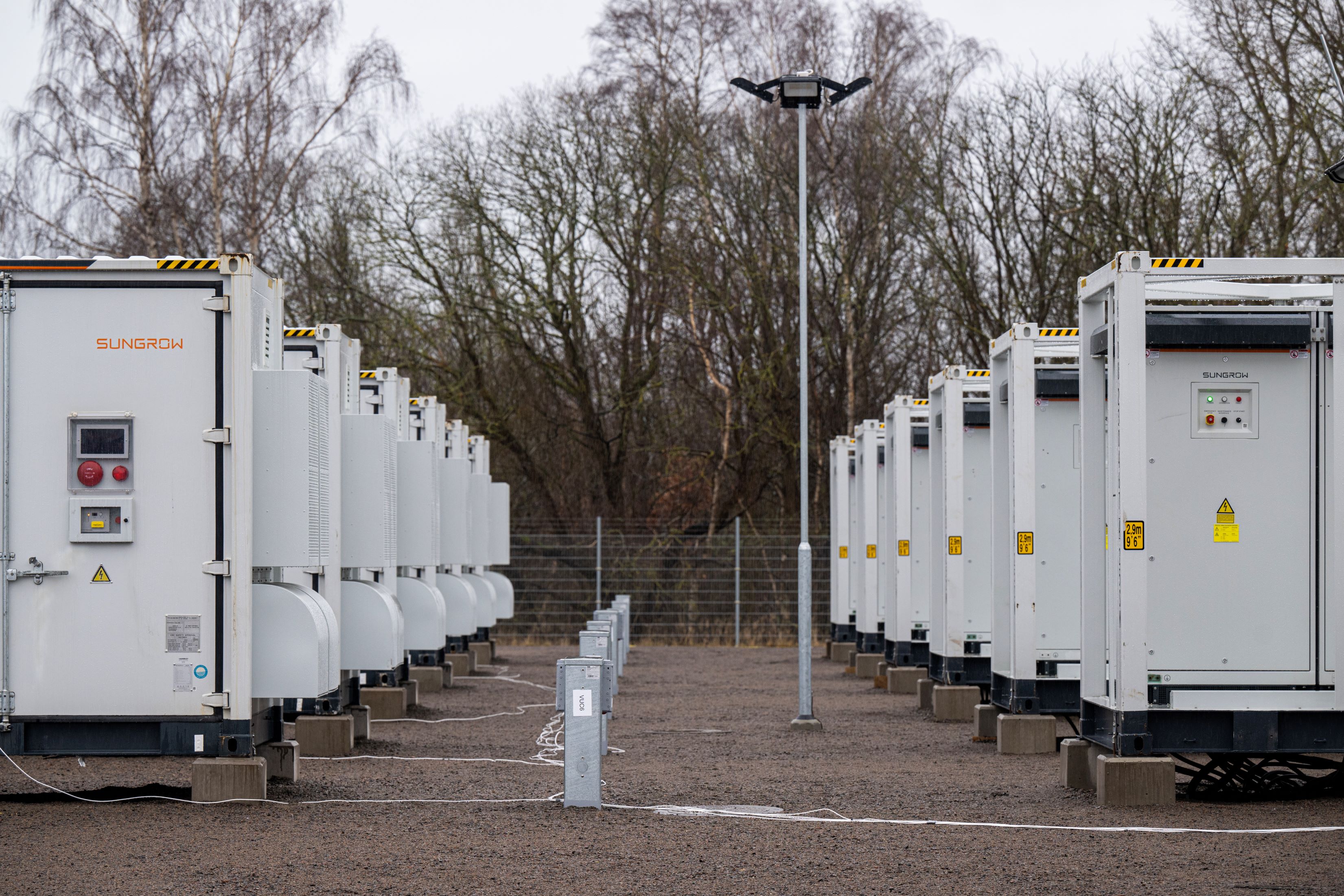

Batteries Storing energy for the future
Large-scale battery systems (BESS) can absorb volatilities in the power supply and defer renewable energy from times with low demand but high renewable generation to times with low generation but higher demand. The establishment of storage systems therefore allows the introduction of additional renewable energy capacities accelerating the transition to a CO2-free energy future.
Role of Axpo
Axpo combines in-depth knowledge of trading on European energy markets with many years of experience in operating systems and state-of-the-art calculation techniques based on AI and machine learning to make optimal use of storage systems and optimize the value contribution of the storage portfolio. Axpo identifies the revenue streams available in the countries, optimizes the operating strategies and designs the storage systems. This video shows how a large scale battery storage facility works.

Project Development
Axpo has the experience to develop, construct, manage and commercially operate renewables and BESS assets across Europe.
Current Projects
Switzerland
Axpo is now expanding its business in its home market. In Gurtnellen (Canton of Uri), Axpo and energieUri are building two large-scale battery storage facilities with a capacity of 50 MW (Axpo) and 8.6 MW (energieUri). The 50 MW facility could store a maximum of 100 megawatt hours. This corresponds to the average annual electricity consumption of 22 four-person households. The storage facilities are scheduled to go into operation in the course of 2026.
Sweden
Axpo commissioned its first energy storage facility in Sweden in February 2024. The 20MW/20MWh plant was connected to the grid by the local energy company Landskrona Energi. The new battery storage system will be used to help balance electricity supply in the region. With 20 MW, around 4000 households could be supplied with electricity for one hour.
The first containers for the battery storage system were delivered at the end of September 2023. Follow the delivery and construction work in our videos:
Delivery of the containers for the large battery storage systems in autumn 2023

The construction work on the plant in a time-lapse

The large battery storage facility, which was officially opened in February 2024
How it works
What does the battery storage system do?
The battery supports grid security. This is necessary because the grid is not always at full capacity. The 20 MW / 20 MWh large battery storage system is charged when energy production is high (in the example of the storage facility in Sweden, mainly from wind energy). It is in turn discharged when less energy is produced.
What are battery energy storage systems?
Building a battery energy storage system takes about 12 months and, as a rule, the system can be operated for 20 years. The environmental impact of its construction is minimal and the system’s operation is environmentally friendly.
The majority of battery cells are produced in Asia. The most critical component of lithium ferro phosphate (LFP) batteries is lithium, most of which is mined in South America, Australia and China.
Batteries contain critical raw materials, which are difficult to mine in Europe. Once the battery has reached the end of its service life, the raw materials can be extracted and recycled.
Costs
The investment costs for battery systems are expected to decrease over the long term as the efficiency of implemented projects increases and more economies of scale are achieved. However, lithium shortages could result in a temporary price increase, as was seen at the beginning of 2022.
Regulatory framework conditions
Battery storage systems are used in many markets and both consume and generate energy. So it is vital that regulatory authorities establish a clear framework for the construction and operation of such systems.
Grid conditions
Historically, transmission and distribution grids in most countries were designed with centralised production in mind. The battery capacity that can be installed is therefore dependent on the feed-in point and network topology at any specific location.
Battery storage capacity indicates the energy volume that can be stored and is measured in megawatt-hours (MWh).
Output indicates the energy per time unit that can be charged or discharged (also measured in MWh).
The C-Rate indicates how quickly a battery can be charged or discharged. C-Rate = output divided by storage capacity.
State-of-health (SoH) describes the relationship between the storage capacity of a used battery and a new battery: initially, the SoH is 100%.
State-of-charge (SoC) indicates the charging state of a battery: at 0% the battery is empty and at 100% SoC it is fully charged.
The number of cycles indicates how many equal, full charging and discharging cycles a battery carries out over a specific period of time. As a rule, batteries carry out one to two equivalent full load cycles per day.
Round-trip efficiency measures the energy that can be recovered in comparison to the energy stored (output divided by input). Round-trip efficiency is normally 85% or higher.
Battery service life depends on its operation. Frequent charging and discharging, as well as extreme charging states, decreases the service life of a battery.
